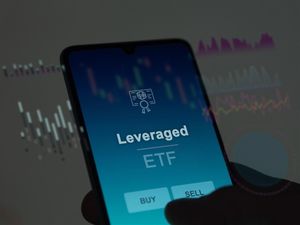Lead, SD, Oct. 24, 2025 (GLOBE NEWSWIRE) -- For Cabot-Ann Christofferson and Alissa Love, the morning began like many others: a ride in a metal cage 4,850 feet straight down to the deepest underground laboratory in the United States.
This day, however, carried special urgency. The team had spent months precision-machining, cleaning and packing the ultra-pure copper, originally grown for the Majorana Demonstrator experiment, to be repurposed for a new dark matter detector halfway around the world.
“It is interesting that some of the remaining copper that was grown for Majorana back in 2013 or 2014 and then disassembled in 2021 has found new life. Parts of the Majorana Demonstrator will live on in a dark matter experiment in France,” said Christofferson, a research scientist at South Dakota Mines who leads the copper electroforming lab at the Sanford Underground Research Facility (SURF).
So why go to such lengths to move copper from one underground lab to another? The reason is the unique purity of this copper—manufactured at SURF and essential to the success of some of the world’s most sensitive physics experiments.
Managing background
Most people don’t think about it, but radiation is all around us.
A butter knife in your kitchen drawer wouldn’t register on a Geiger counter and is perfectly safe for everyday use. But for physicists searching for extremely rare phenomena—like the theoretical interaction of a dark matter particle—that same knife would “scream” with background radiation.
To minimize interference, scientists build their instruments from materials that emit virtually no radiation. That often means moving manufacturing deep underground. Facilities such as SURF—nearly a mile beneath the surface—shield materials from cosmic rays that would otherwise leave radioactive traces within anything made at ground level.
A race against the atomic clock
The ride back to the surface from 4,850 feet below takes about 12 minutes. Once topside, the team moved quickly loading boxes into a waiting vehicle. Christofferson and Love, still in their lab coveralls, began the 50-mile drive from the town of Lead to meet a semi-truck carrying a special steel-lined shipping container.
“We only had about an hour that the copper was exposed to the cosmogenic radiation on the surface before it went into the shielded container. Getting it out of the high elevation, where SURF is located, is probably the biggest thing because there is more exposure to cosmic rays at elevation,” Christofferson said.
The thick-walled steel container, built to block radiation, features a gear-driven door that cranks open and shut. Once sealed inside, the shipment began its long journey across North America and the Atlantic Ocean.
A legacy of electroforming and machining copper
For more than 15 years, Christofferson has led the SURF research team advancing the science of electroforming copper at the Davis Campus, 4,850 feet underground. The process involves slowly depositing layers of copper onto a mandrel submerged in an electrically charged copper solution.
Much of SURF’s electroforming work supported the Majorana Demonstrator. Now in the process of decommissioning, its copper has become a sought-after resource for the dark matter experiment known as DAMIC-M (DArk Matter In CCDs at Modane). Professor Paolo Privitera, at the University of Chicago, is the spokesperson for the DAMIC-M international collaboration.
“SURF has this unique underground facility where ultrapure copper is grown in specialized baths, and then machined to fit the experiments. There is no other place in the world with such capability,” said Privitera.
At SURF, the team retooled and prepared the copper for shipment. Love, a master’s student in chemistry at South Dakota Mines, oversaw the process.
“It was really cool, because I witnessed the process of this team growing and machining copper for other experiments. And then completed the precise cleaning and preparation of the copper for shipment. It's great to see the completion of the project, out the door and off to France,” Love said.
For Jaret Heise, science director at SURF, the value of this copper, in multiple applications is noteworthy. “These materials that supported the search for a rare decay associated with neutrinos are now doing the same in the global effort to identify the nature of dark matter,” Heise said.
Enhancing the global hunt for dark matter
The Modane Underground Laboratory, where the full DAMIC-M detector is being installed, sits under the Alps, in middle of a tunnel that connects France to Italy.
This article, published by the University of Chicago, explains that detectors like DAMIC-M are designed to capture the rare moments when a dark matter particle collides with an atom inside the detector. That collision produces a signal that could reveal dark matter’s elusive nature.
DAMIC-M works much like a digital camera. Instead of recording photons on a light-sensitive chip, it aims to capture dark matter particles. The silicon chips inside DAMIC-M will be surrounded by ultrapure copper from SURF—crucial for eliminating false signals caused by radiation in less pure materials.
“We knew from previous measurements that Majorana copper is extremely pure. The SURF group, led by Cabot-Ann, took the existing electroformed copper and machined it according to DAMIC-M design. So, the contribution from the Majorana collaboration and the services at SURF have been fundamental to our success,” said Privitera.
Although scientists have abundant indirect evidence of dark matter, no one has yet detected it directly. Dozens of experiments worldwide are racing to be the first. DAMIC-M has already proven an ability to expand the hunt into previously unexplored territory using a prototype instrument as outlined in this scientific paper published in this summer in Physics Review Letters and referenced during this “Deeper Talk” seminar at SURF in June. SURF’s copper will help DAMIC-M push the hunt even further, into new frontiers.
“Without this electroformed copper from SURF, we wouldn’t be able to reach the sensitivity that we had foreseen. The collaboration with SURF has been extremely successful, and I expect it will continue in future upgrades of the experiment. I want to give full credit to Cabot-Ann for the outstanding quality of the copper parts and for running smoothly this complex operation. She has been an exceptional collaborator, and SURF is very lucky to have her working for the lab,” said Privitera.
Christofferson emphasized the collaborative nature of science and SURF’s mission to advance research across the globe.
“You may not host the experiment, but all labs can partake and serve a purpose for the greater science. It's a collaborative effort. It takes more than one underground lab for these experiments to succeed,” Christofferson said.
DAMIC-M is expected to begin collecting data in 2026. The experiment will run for several years, offering new insights into the nature of dark matter—and extending the legacy of SURF’s pioneering work in electroformed copper.
Attachments

Mike Ray Sanford Underground Research Facility 605.571.2314 cray@sanfordlab.org






